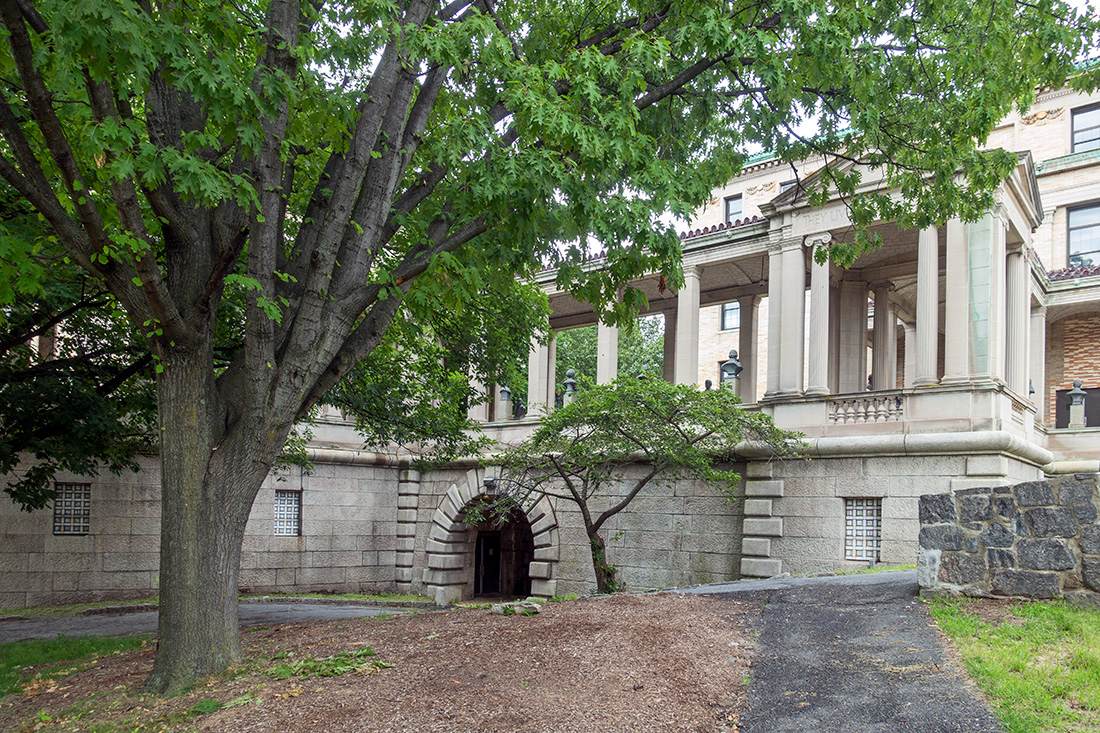 Hall of Fame for Great Americans, side view, University Heights — © Brian Rose
Hall of Fame for Great Americans, side view, University Heights — © Brian Rose
I‘ve seen a lot of the Bronx over the years. It’s a much maligned borough of New York that contains some of the city’s great institutions — the Bronx Zoo, the New York Botanical Garden, Fordham University, and the Yankees, no less. My son went to Bronx Science, one of the prestigious specialized high schools, which have been in the news lately because of the controversy around the entrance exam, which is the only criterion for admission. Bronx Science is an academic island of Asian and white students in a largely Latino borough. But that’s a controversy I’ll take up another time.
Last week, I visited the Bronx Community College campus for the first time. It was originally New York University before they sold the property to the state and headed downtown to Greenwich Village. They left behind a grouping of Stanford White neoclassical buildings, and a complex of structures designed by Marcel Breuer, one of the great modernist architects of the mid-20th century. Wrapping around the back of the White buildings is a colonnade containing the Hall of Fame for Great Americans, a series of busts depicting noteworthy Americans.
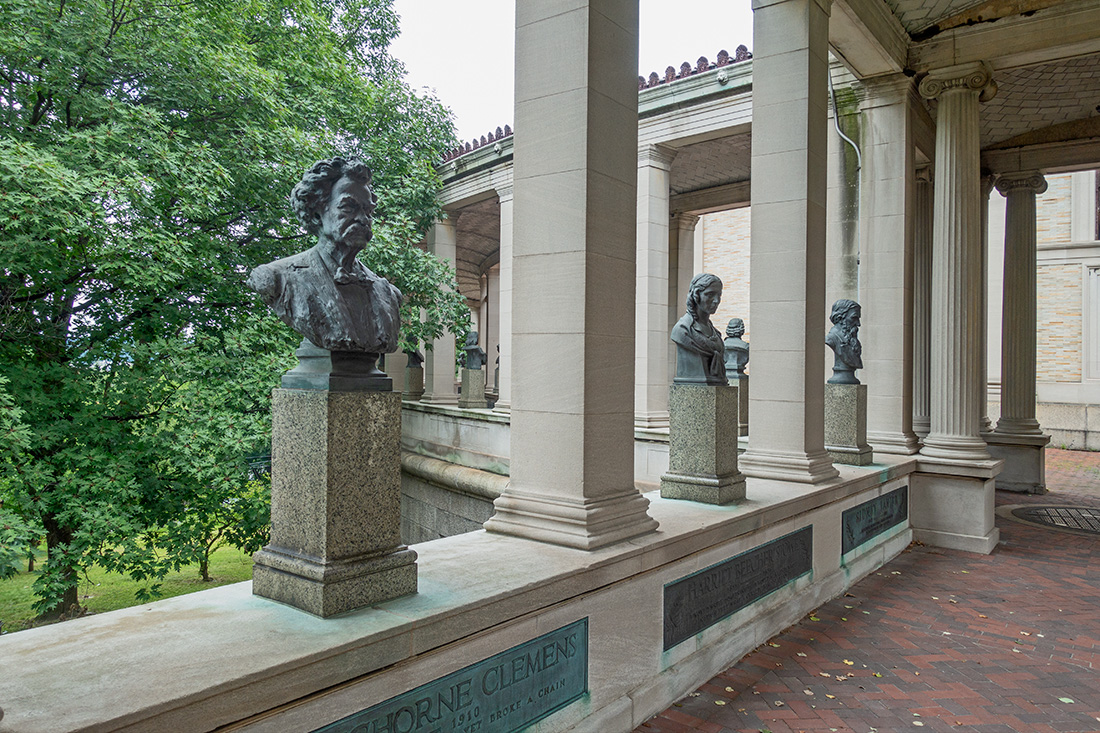
Samuel Clemens (Mark Twain), Hall of Fame for Great Americans — © Brian Rose
The Hall of Fame opened in 1900 and was the focus of much national attention. The public was invited to nominate worthy individuals, and an esteemed jury made the final selection. Some of the most important sculptors of the time, including Augustus Saint-Gardens and Daniel Chester French created the bronze busts. Additions were made over the years, but by and large, the selection represents a view of American culture from more than 100 years ago.
Henry Mitchell McCracken (NYU president), extremely passionate about history and civic duty, believed that Americans needed a place to honor great and influential figures from the past. Influenced by the Rumshalle (hall of fame) in Germany, the Chancellor pictured a pantheon where Americans could pay tribute to those who left their mark on America. MacCracken’s vision would become a reality and be dubbed the Hall of Fame for Great Americans, the first Hall of Fame ever built in the United States.
The College on a Hill: A History of New York University’s Bronx Campus Told Through its Architecture
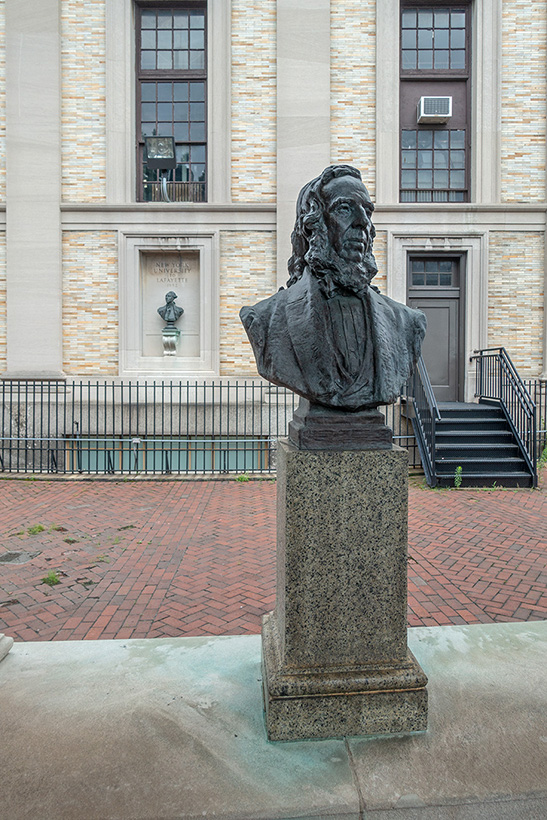
Peter Cooper, Hall of Fame for Great Americans, University Heights — © Brian Rose
Over the years, the Hall of Fame lost its centrality. The heroic classical approach to honoring achievement fell out of favor, and when NYU consolidated its operation in Manhattan, the Hall of Fame and the entire Stanford White grouping of library and classrooms buildings was neglected by the state of New York. It did not help that the Bronx in the ’70s and ’80s became an urban hellscape, and few people ventured beyond Yankee Stadium on the 4 train. While the Bronx has rebounded in the intervening years, the Hall of Fame and its accompanying buildings remains in deplorable shape.
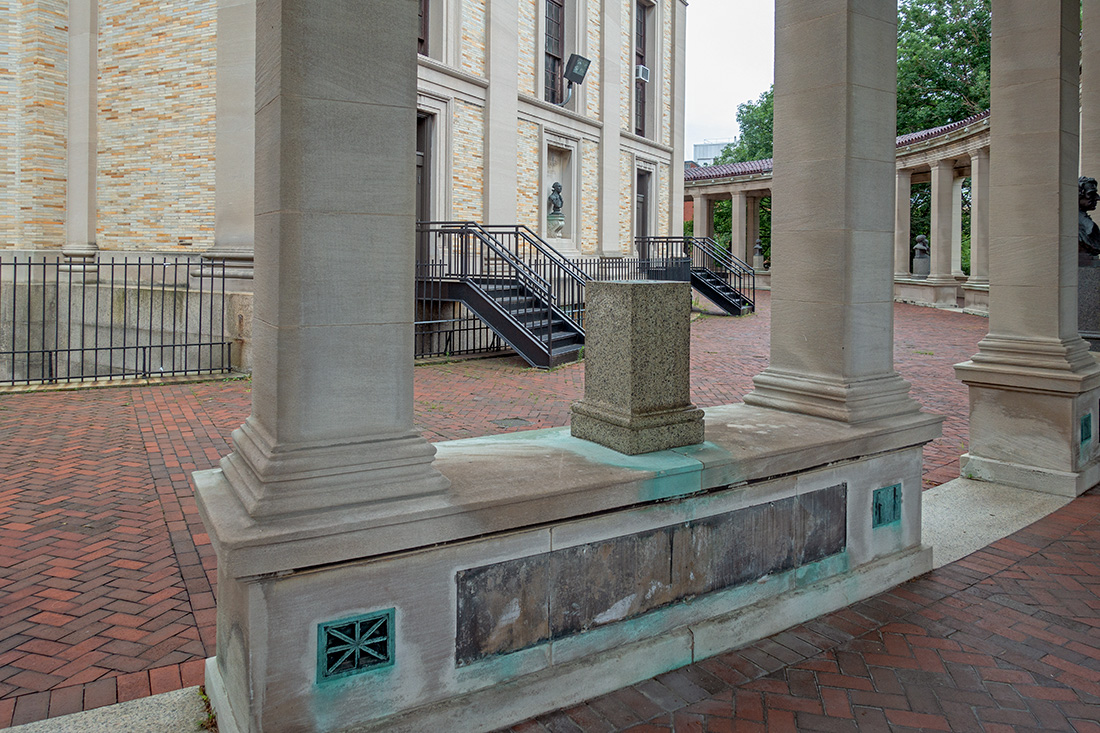
Empty pedestal, Robert E. Lee bust, Hall of Fame for Great Americans — © Brian Rose
Last year (2017), soon after the neo-Nazi violence in Charlottesville, Virginia, spurred by the planned removal of a Robert E. Lee sculpture, many communities began reassessing the presence of Confederate symbols in parks and public squares. With the blessing of local politicians and the president of the college, Governor Andrew Cuomo ordered the removal of two sculptures from the Hall of Fame: Robert E. Lee and Stonewall Jackson. A year later, the pedestals remain empty, and no signage indicates who, what, or why.
I am no apologist for Confederate generals, who were undoubtedly on the wrong side of history, and fought for the preservation of slavery. But I do not believe that removing statues, especially without providing explanation, is the answer. I have addressed this issue before in my blog. The Hall of Fame should not be viewed as a contemporary attempt at venerating American heroes. It is, as a form of cultural expression, an important historical artifact. It is also an important piece of artistic and architectural heritage. Robert E. Lee was placed next to his Union counterpart Ulysses S. Grant. They were adversaries, representing the two sides of the conflict that tore apart the nation — that in the age of Trump revanchism remains an unresolved conflict. We should be talking about what these two men represented, and how they came to be on these pedestals in the Bronx.
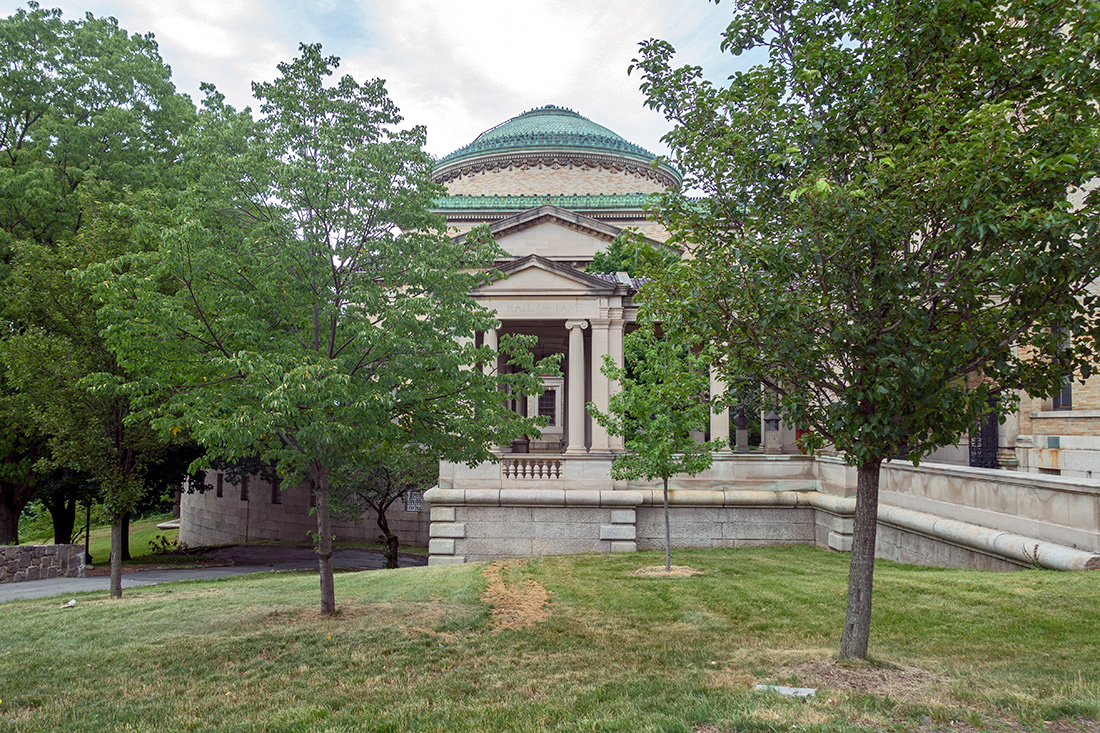
Gould Memorial Library, Stanford White architect, University Heights — © Brian Rose
If you look at the choices made, one could say that the entire Hall of Fame of Great Americans has a dubious legitimacy. There are few women, few African Americans, and many of the great figures represented had serious flaws. Andrew Jackson led a campaign of genocide against Native Americans. Washington and Jefferson owned slaves. Many of the great industrialists achieved their wealth on the backs of poor laborers working in harsh conditions. Even Stanford White, the architect of the complex was guilty of raping a teenage girl, and was then murdered years later by her husband who claimed White had ruined her. Should we blow up the whole edifice?
When I was there last week, there were no other visitors.
Next up, Marcel Breuer, and the one of the great modernist masterpieces in the world — largely unknown — in the Bronx.